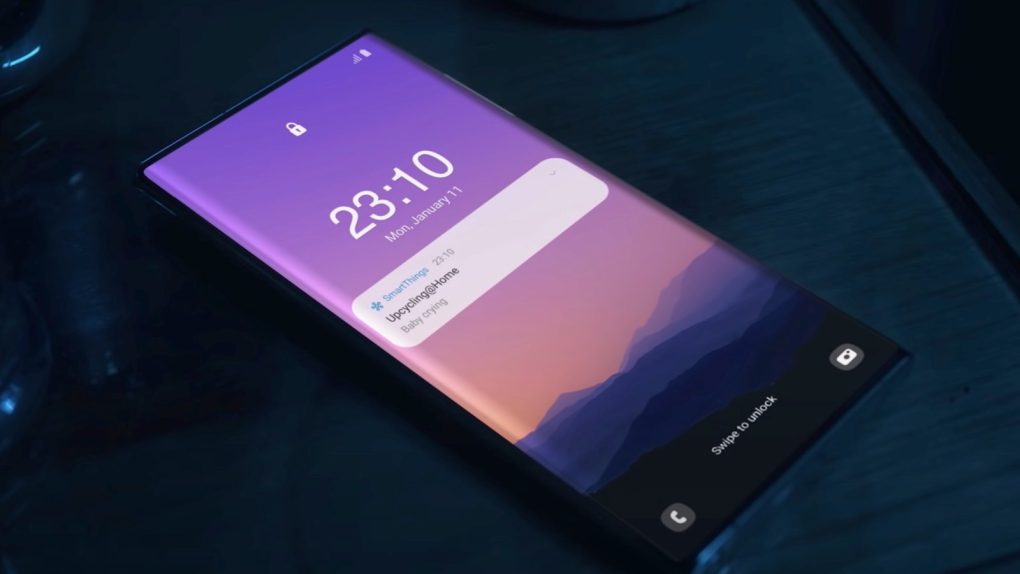The Galaxy Z Fold 3 foldable is widely expected to be Samsung’s replacement for the Note 21. The chip shortage gave Samsung the perfect excuse the skip a Note update this year, and the entire series might be scrapped in favor of foldables. The Z Fold 3 will be Samsung’s first phone with a foldable display that supports the S Pen stylus. That’s an exciting upgrade, not just because of the utility of a stylus when it comes to interacting with a bigger display. S Pen support implies that the foldable glass cover that sits on top of the OLED panel is more durable than last year’s model.
The Fold 3 might also be Samsung’s first phone featuring the display tech that we’ve all been waiting for: an under-display camera (UDC). Best of all, the Fold 3 might not be the only 2021 to feature the new screen tech, as several devices from various Chinese smartphone makers will launch with the same UDC screens.
Placing the camera under the screen is already technically possible. We’ve seen the tech demoed a couple of years ago via concept phones from China. ZTE launched the first commercial phone with a camera placed under the screen last fall.
The technology allows smartphone makers to create perfect all-screen designs. There’s no need for a notch or a hole-punch display if the sensors and cameras can be positioned under the screen. The display portion covering them would still show images. But the light would reach the camera through those pixels for photos and videos.
Photo quality is likely the issue that delayed the arrival of UDC designs. Smartphone vendors have probably had to devise algorithms to help with selfie cam imagery. That’s just speculation based on functional UDC phone concepts so far. Under-display cameras would have to offer a camera performance on par with what’s available from traditional selfie cam design, as selfies remain quite popular.
The second half of the year is when the Under Display Camera officially debuts, including at least Samsung (folding), Xiaomi (MIX4), OPPO (folding), vivo and ZTE (greatly improved version)
— Ice universe (@UniverseIce) April 19, 2021
Long-time Samsung leaker Ice Universe said on Twitter that multiple smartphones would feature UDC designs in the second half of the year, “including at least Samsung (folding), Xiaomi (MIX4), Oppo (folding), Vivo, and ZTE (greatly improved version).”
Before that, the insider claimed that Samsung would use its UPC tech in the Fold 3. UPC is short for Under Panel Camera, a technology that Samsung quietly unveiled in January during a series of video promos for its brand new OLED screens for laptops — here’s one of them.
Samsung advertised the various benefits of OLED screens for laptops. It’s not just the image quality that gets a significant boost from OLED, according to Samsung. Its OLED panels also support 90Hz refresh rates, and they allow notebook makers to create devices with larger screen-to-body ratios thanks to UPC tech. It’s unclear what laptops will feature UPC OLED screens from Samsung, but the Korean giant will unveil its own 2021 Galaxy Book devices next week, including OLED options.
If UPC tech exists for laptop displays, then Samsung is likely ready to use it in smartphones as well. While laptops aren’t used for selfie photography as often as phones, the camera plays a similarly important role. The pandemic forced more people to work from home, leading to increased use of webcams. Video conferencing software saw a significant boom during the health crisis, and some laptop vendors have been looking to offer customers better webcam performance from their 2021 models. Any laptop with UPC tech should provide a great camera experience.
While the leaker has an excellent track record at predicting Samsung’s moves, this is just a rumor, so nothing can be confirmed at this time. However, companies including Xiaomi and Oppo demoed their early UDC screens a couple of years ago. Expecting them to be at the forefront of UDC phone design makes plenty of sense.
Separately, Apple’s iPhone 13 is rumored to feature a smaller notch, with the iPhone maker said to be already working on a phone design featuring Face ID components under the screen.







